Bermuda is the Target This Year
It is incredible what can transpire in just a few hours in the tropics, but it also highlights how predictable our forecasts are becoming. Let’s recap.
In our last official BMS Tropical Update, Humberto was just named a tropical storm and, over the weekend, evolved into a powerful Category 5 hurricane with winds exceeding 160mph as forecasted. Essentially, Humberto is following a similar track and intensity to what Erin did in mid-August. Erin, however, was overall larger in size.
Below is a comparison of the wind swath from Erin to the wind swath of Humberto from our BMS Verisk Respond wind swath of winds greater than 70 mph. One can see how Humberto will track closer to Bermuda, but Erin's overall wind swath was much larger in width.
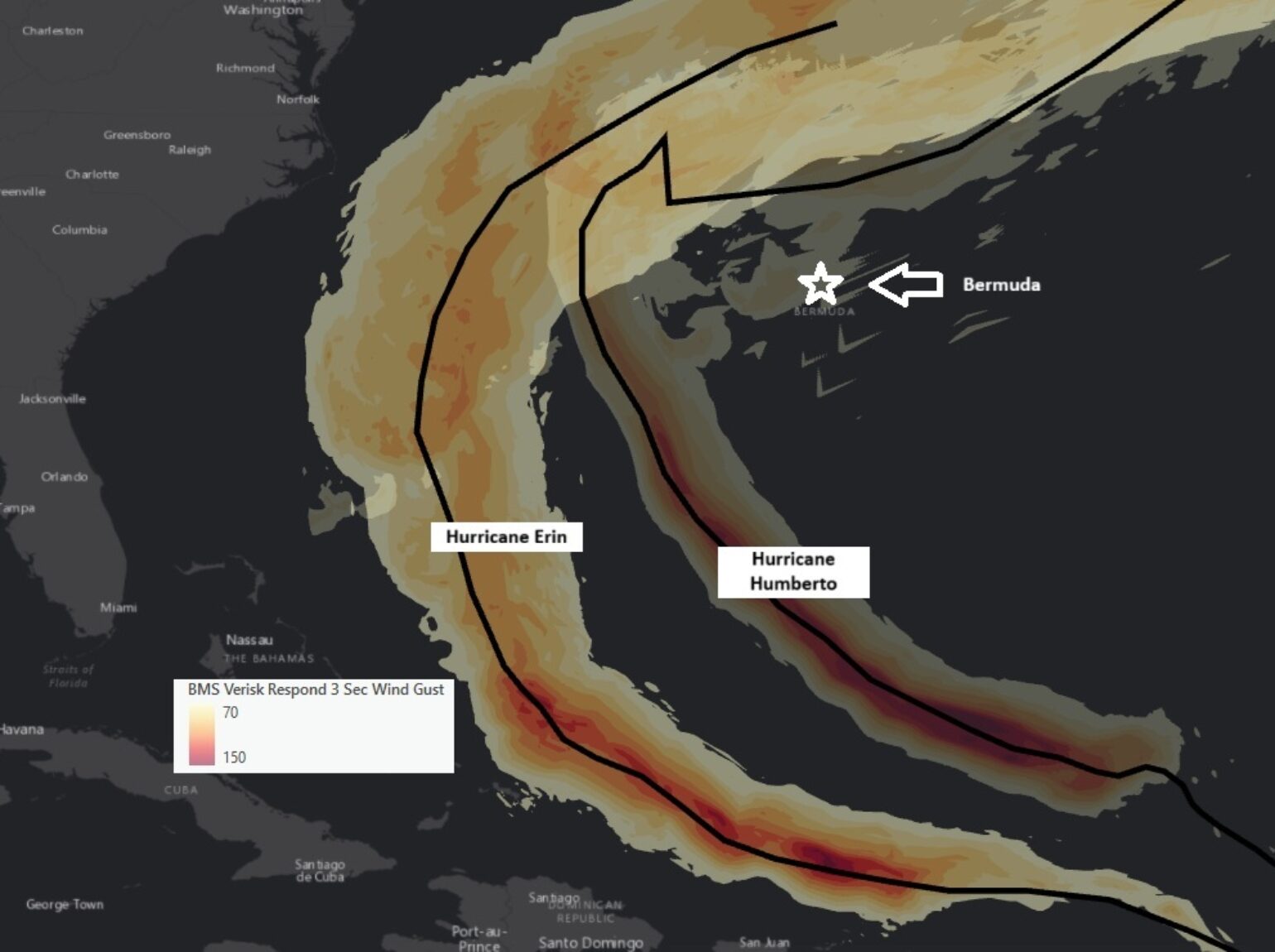
Due to a smaller consolidated wind swath, Humberto should have limited impact on the island of Bermuda as it tracks about 275 miles to the west of Bermuda. In comparison, Erin tracked 450 miles West of Bermuda. Based on the current forecast, winds could gust as high as 60 mph across the island as Humberto, located to the west of the island, weakens to a Category 3 hurricane on Tuesday morning.
The most significant impact on the insurance industry might be the short-term view of these rapidly intensifying hurricanes, and the fact that there have been two Category 5 hurricanes this season (Erin & Humberto). And, yes, the last occurrence was just last year with Beryl and Milton, both having rapidly intensified, what might be rarer is the fact that we have had two consecutive years with two Category 5 hurricanes. The last time there were two successive back-to-back hurricane seasons with Category 5 hurricanes was 1932 & 1933, when weather maps were drawn by hand and there were no aircraft or satellites to truly understand the top-end intensity. Of the 44 Category 5 Atlantic Hurricanes ever recorded, Humberto will be just the 4th to never make landfall anywhere as a Tropical Cyclone. The others are Hurricanes Erin (2025), Lee (2023), and Lorenzo (2019). The insurance industry is undoubtedly experiencing an unprecedented stretch of tropical activity in the Atlantic since 2016. Humberto is now the 12th category 5 hurricane, the most ever recorded during a 9-year timeframe since 1851. However, with rapid intensification, storms reaching their theoretical maximum intensity requires near-perfect conditions. Not all storms do this, and we can see this from the other tropical trouble the insurance industry is watching near the Bahamas.
In our Tropical Update posted Friday, we discussed the development of Invest 94L, which over the weekend gradually evolved into Potential Tropical Cyclone 9, then Tropical Depression 9. Twenty-four hours later, it finally became Tropical Storm Imelda, located about 240 miles southeast of Cape Canaveral, FL, with winds of 60 mph. It will slowly intensify into a hurricane by tomorrow afternoon, so as you can see, not all named storms rapidly strengthen. For the insurance industry, the question still is how many hurricanes develop and whether they strengthen quickly. It seems that this has been the case this year. So far, nine named storms have formed, including three hurricanes, all of which have become major.
However, with Humberto being a fish storm, there is much more attention on the “I” storm, which is typically one of the costliest letters to the industry. In fact, today marks the anniversary of Hurricane Ian rapidly intensifying into a Category 5 hurricane in 2022 and making landfall near Coya Costa in Southwest Florida. Although there was some concern over the weekend that Imelda could impact the Carolina coastline, there was also the possibility that Imelda could turn out to sea, which is why it is so important not to jump the gun on these tropical systems. Three days ago, most hurricane models had nearly 100% agreement on a landfalling tropical system heading into the Carolinas. There was sufficient support to declare a State of Emergency in advance for South Carolina. Multiple news agencies began hyping the system, and local meteorologists started comparing it to Helene from the previous year. However, in these updates, we highlighted the uncertainty in the overall forecast and that heavy rains could occur just a short distance away, depending on the track of the tropical moisture.
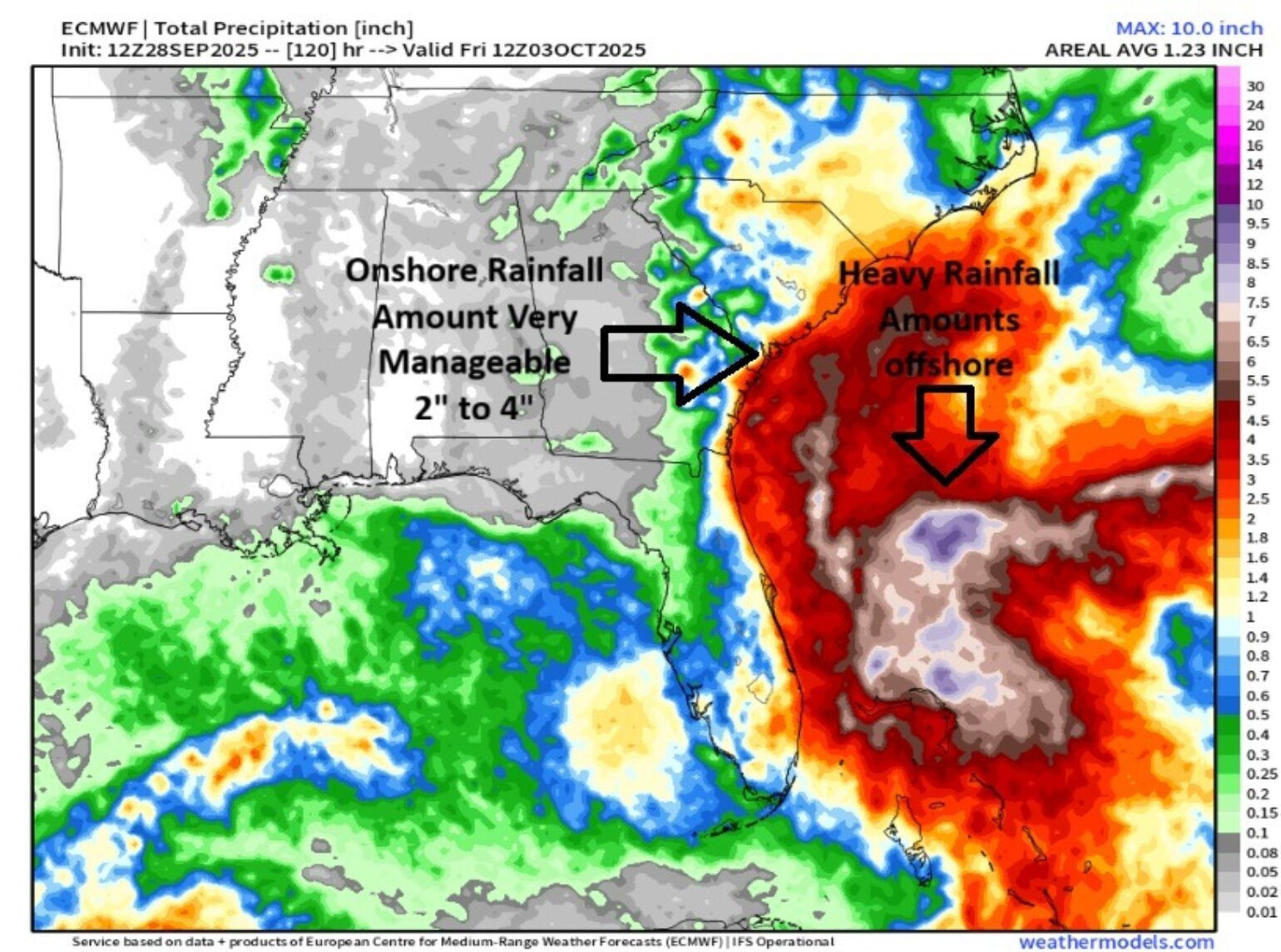
Today, we now know that Imelda won’t be the “I” storm that the insurance industry always worries about, and wind and rainfall should be very manageable for the industry. However, the “I” storm will impact the insurance hub of Bermuda as Imelda could actually produce stronger winds for Bermuda than both Erin and Humberto. It is expected that after Imelda turns out to sea, it will track very close to Bermuda on Wednesday night. This will bring hurricane conditions to the island and might make Imelda the only landfalling hurricane of the 2025 Atlantic Hurricane Season.
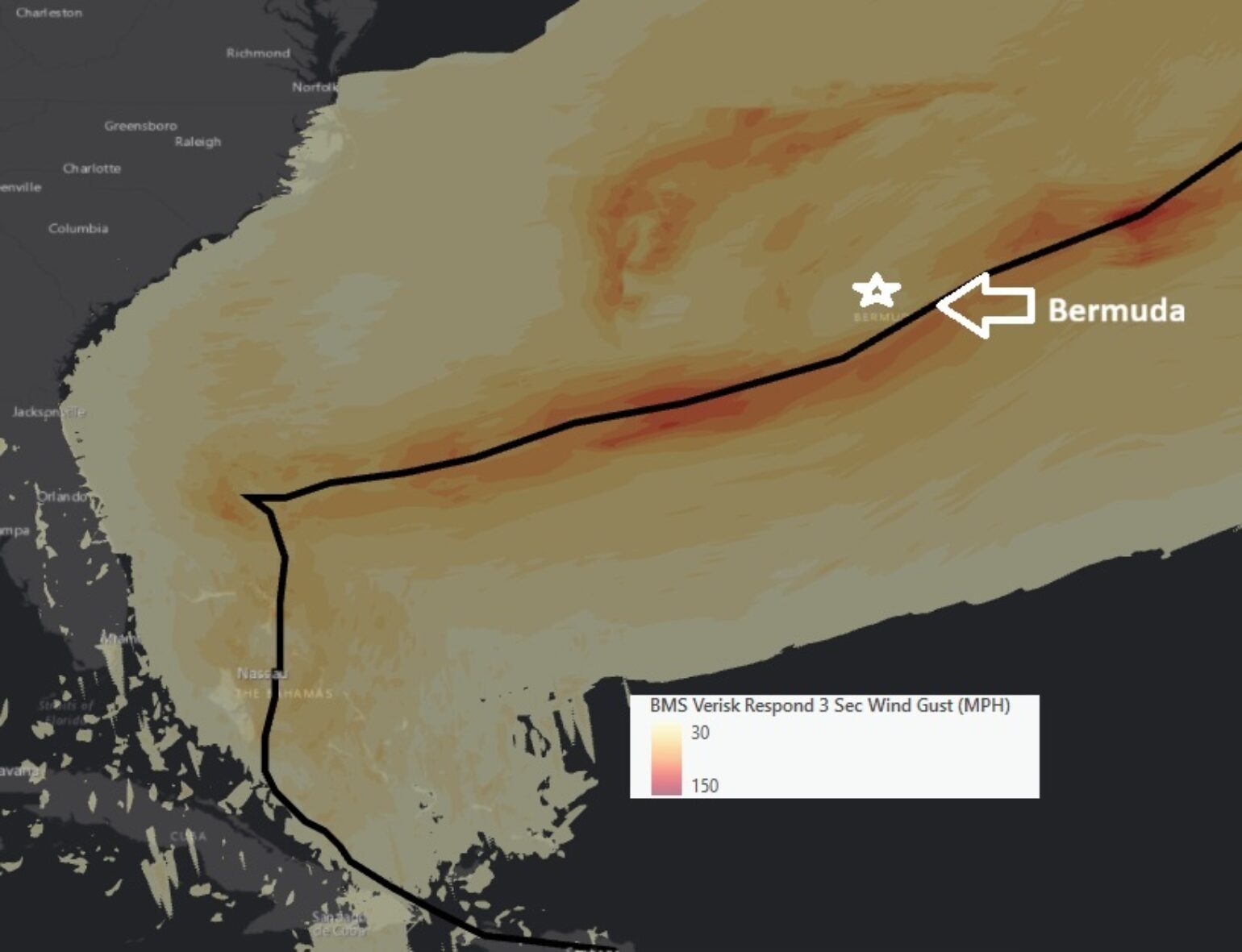
What is next? Are we landfall-free?
All in all, as we enter the start of October, there is nothing in the 10-day forecast that suggests a landfalling hurricane is imminent anywhere besides Bermuda with Imelda. A typical Atlantic season, the climatological chance of at least one U.S. landfalling hurricane after October 10th (i.e., from October 11 through November 30) is 25%. It occurs about once every four years. Clearly, there are regional differences. Florida and the Southeast retain substantial late-season risk; Texas and much of the western Gulf see their risk drop sharply by October.
While climatology is useful, what do the climate forecast models suggest? Based on the ECMWF climate model, October looks to be a fairly busy month in that active period, beginning the second week of October and lasting through early November, with perhaps another storm in the Main Development Region (MDR) and a single coming from the Caribbean and Gulf of Mexico.
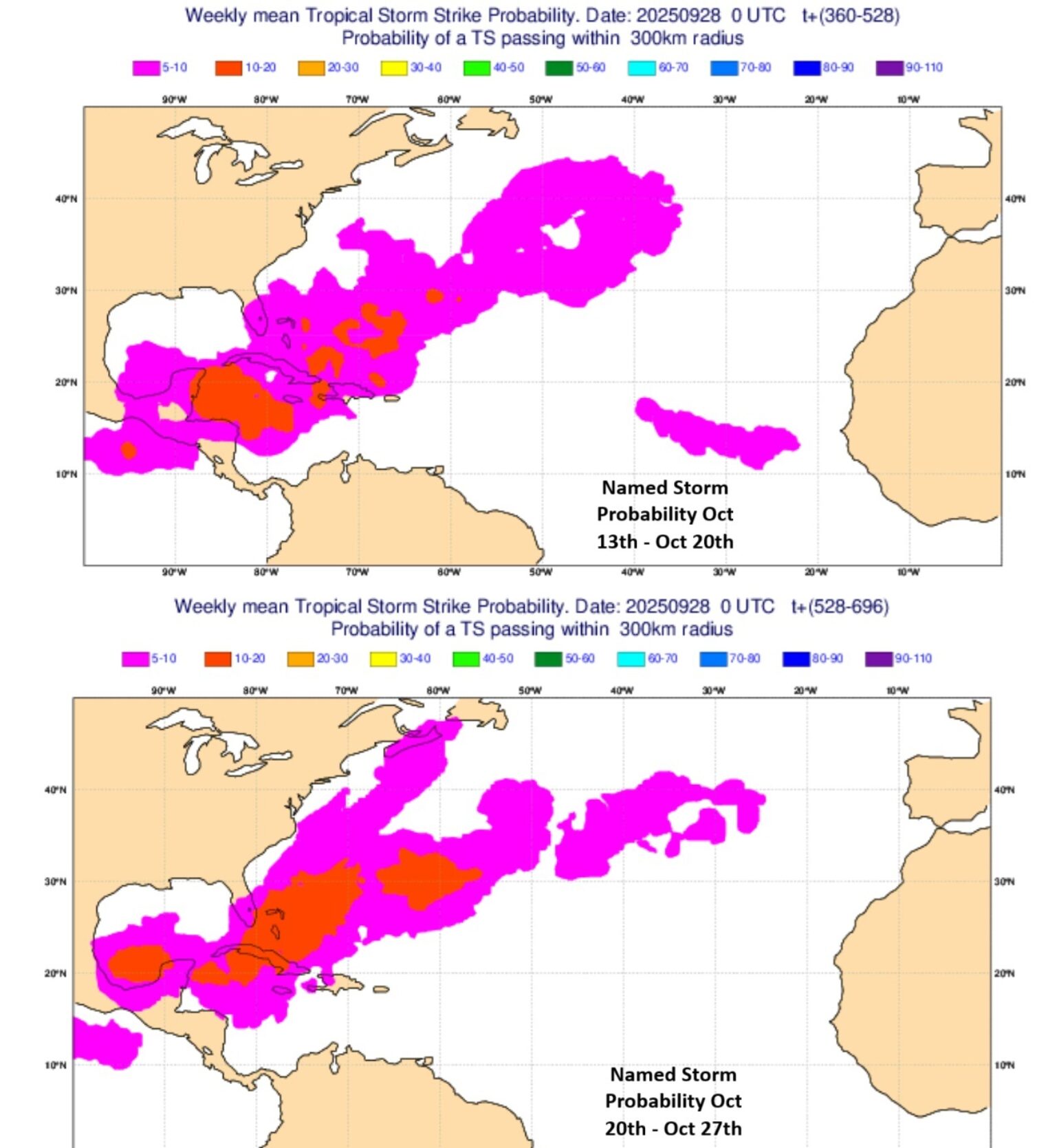
The climate model precipitation output is pretty consistent in showing an abundance of precipitation across the Caribbean for most of October and November.
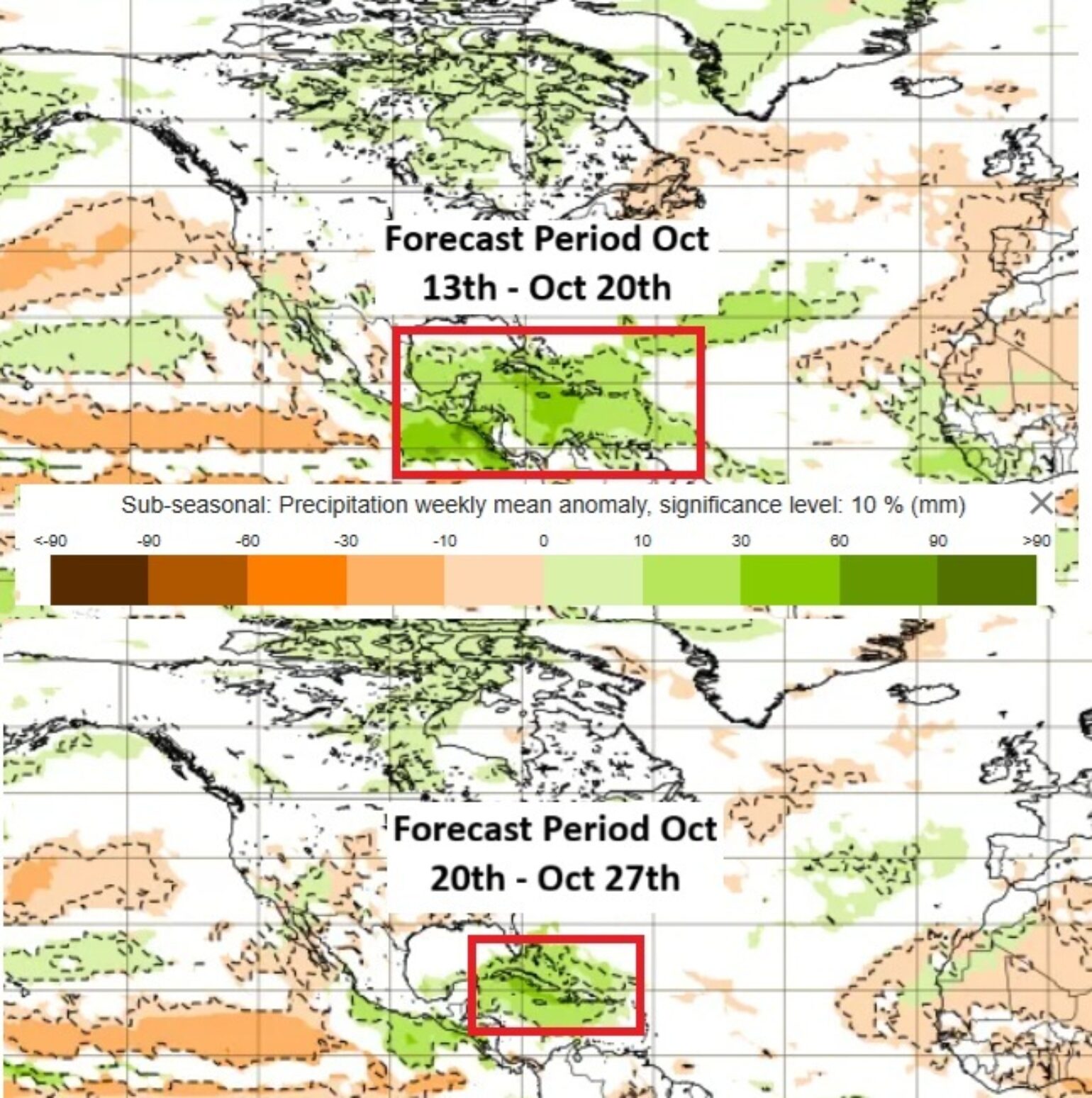
Despite a dead peak season, 2025 may still experience some tropical troubles across the western Caribbean, and these systems can move north into the eastern Gulf or across Florida. Stay tuned to these tropical updates to determine if this is just tropical precipitation or something more that the insurance industry needs to worry about.
